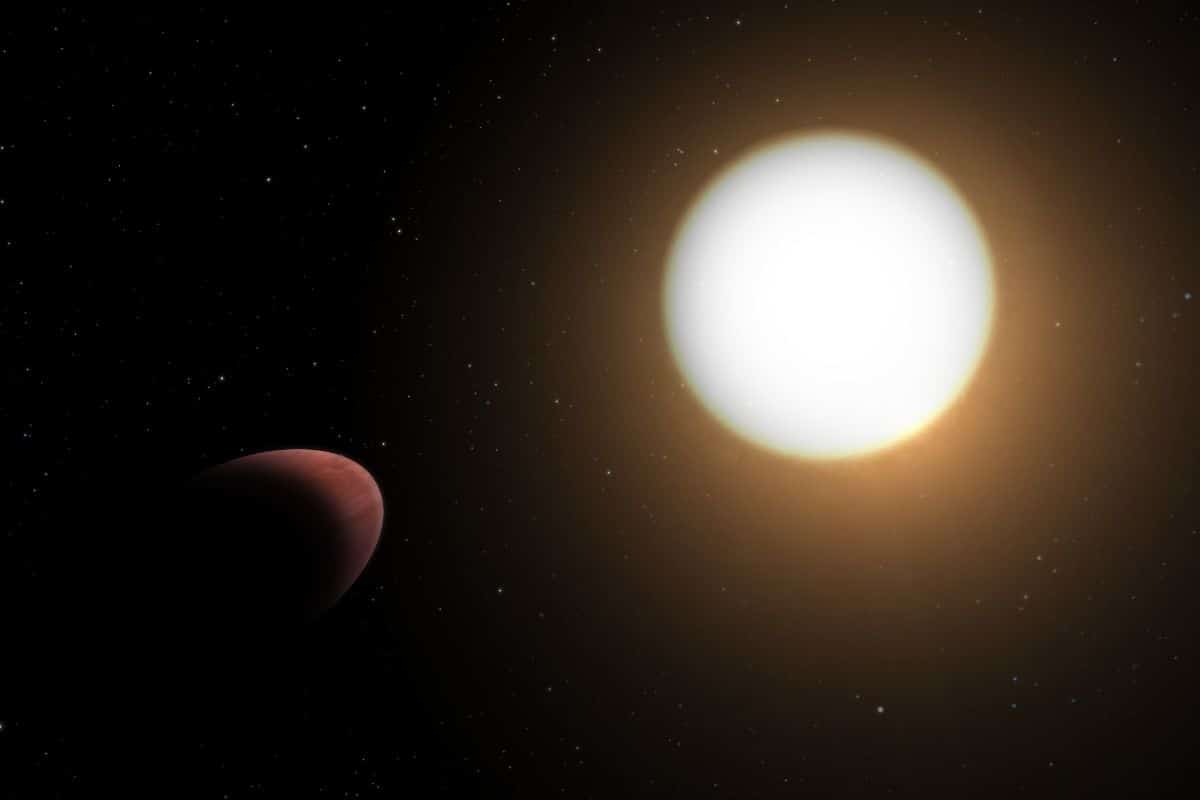

Planets are usually more or less round. But not WASP-103b; the planet is being pulled out of its decency by its parent star and therefore has the shape of a rugby ball.
This is apparent from observations by Cheops, a satellite of the European Space Agency that has been specially developed to further characterize exoplanets. “It’s great that Cheops was actually able to reveal this deformation,” said researcher Jacques Laskar.
tidal forces
The planet in question is known as WASP-103b. The planet is 1.5 times more massive than Jupiter and orbits a star 1.7 times larger than our sun in about 1 day. The short orbital period already reveals that the distance between the planet and the parent star is small. And that’s why the planet is shaped like a rugby ball; the nearby parent star exerts immense tidal forces on the planet. It is somewhat comparable to the tidal forces that the earth experiences at the hands of the moon – and to a lesser extent the sun – and which are responsible for the tides in our oceans and seas. However, the tidal forces are not so strong that our planet is strongly deformed as a result. But in the case of WASP-103b – which is very close to its parent star – things are different.
Cheops
It has long been suspected that planets close to their parent star can experience immense tidal forces. But evidence that those tidal forces were large enough to actually deform a planet was lacking. Until now. Because thanks to Cheops, researchers have succeeded in detecting such a deformed exoplanet for the first time.
Cheops repeatedly stared at WASP-103 and repeatedly witnessed WASP-103b move in front of the star, blocking part of the starlight. Normally, on the basis of such a transition, for example, it is possible to determine the size of a planet. But thanks to Cheops’ precision, researchers were able to go one step further and also conclude that the planet moving in front of WASP-103 was not round, but rugby-shaped.
Composition
And that shape then reveals more about the composition of WASP-103b. “The degree to which a material resists deformation depends on its composition,” explains researcher Susana Barros. “For example, thanks to the moon and the sun, we have tides here on Earth, but we only see them in the oceans. The rocky part of the planet doesn’t move as strongly because of those tides. By measuring the extent to which a planet is deformed, we can also say more about the extent to which it consists of rock, gas or water.” For the time being, in the case of WASP-103b, the data suggests that the planet has much in common with Jupiter in composition. Researchers can’t explain that very well, because the radius of WASP-103b is twice that of our Jupiter. “Basically, you would expect a planet 1.5 times the mass of Jupiter to be about the same size, so WASP-103b must have been pretty inflated due to the heat of the star and possibly other mechanisms,” said Barros. Future observations should reveal whether the planet really has the same composition as Jupiter and – if so – why it is so inflated. In addition, the researchers also want to find out how big the core of the exoplanet is. “Because then we can also understand how the planet came into being.”
However, possible follow-up research will not be limited to the composition of WASP-103b. Because there are also questions about the orbit of the planet. Normally you would expect that a planet that is so close to the parent star and to which the parent star pulls so strongly, would have an increasingly shorter orbital period. Simply because the parent star draws the planet closer to itself – and even swallows it up. But WASP-103b seems to emerge from that dance in a mysterious way. Because measurements cautiously indicate that the orbital period is increasing and the planet is therefore slowly moving away from the star. However, more observations are needed to confirm and interpret those measurements.
Source material:
“Cheops reveals a rugby ball-shaped exoplanet” – ESA
Image at the top of this article: ESA